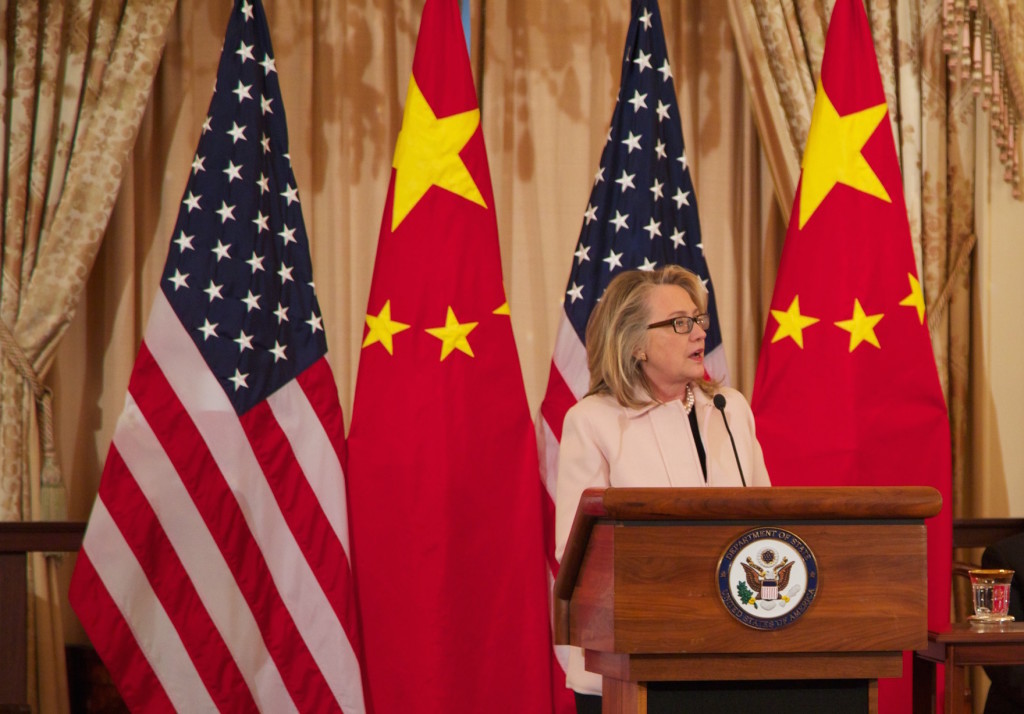Dropping the Ball: The AIIB and Obama’s Failure to Pivot to Asia
 Elevated road in Shanghai. China has led the effort to establish the AIIB, holding commanding percentages of both shares and votes in the Bank. Credit to David Veksler, Flickr CC
Elevated road in Shanghai. China has led the effort to establish the AIIB, holding commanding percentages of both shares and votes in the Bank. Credit to David Veksler, Flickr CC
Editor’s Note: Awarded Best Article in the Commentary category at the 2016 McGill Student Journalism Awards
It’s been almost five years since Hillary Clinton popularized the term “pivot to Asia” in her article in Foreign Policy entitled “America’s Pacific Century.” In her lengthy article, the then-Secretary of State outlined how, after a decade of focusing on the Middle East, it was time to shift focus to East Asia and the simmering geopolitical climate there. The introduction reads that in the decade following 2011 the United States must “lock in a substantially increased investment — diplomatic, economic, strategic, and otherwise — in the Asia-Pacific region.”
During what John Richard Cookson called, “an orchestrated series of speeches and essays,” Obama added to the Secretary’s essay by giving a speech to the Australian parliament, stating “[a]fter a decade in which we fought two wars that cost us dearly, in blood and treasure, the United States is turning our attention to the vast potential of the Asia Pacific region.” In this way, Secretary Clinton and President Obama both claimed in 2011 to work together to push this pivot.

And yet, as time went by and Clinton’s post at the State Department ended, American efforts in the Asia-Pacific region have hardly increased. After an initial substantial boost from 2011 to 2012, American direct investment in East Asia has grown slowly, at the same pace as in the previous decade.
Failure to launch this “pivot” program leads analysts to question why the United States and the Obama administration have chosen to neglect East Asia in the 2010s of all periods. Why, during increased tensions within states in East Asia, has the Obama administration reneged on its promise to devote more money and attention to the important region, which has been called the 21st century’s nascent “center of gravity”?
Recent news stories provide a logical answer to this question. Not only have media and cultural attention been drawn from East Asia back to the Middle East and Europe, but so have actual military engagement and humanitarian aid. The Ukrainian Civil War, increasingly expansionist Russian policies, the Iran nuclear deal, the Syrian Civil War, the migrant crisis plaguing the Middle East and Europe, and terrorism in Europe and North America have all drawn Washington’s attention away from its initial plans to invest in Asia-Pacific and have relocated that effort back to the Middle East, back to terrorism, and back to Cold War conflicts. The current trend is not reflective of Secretary Clinton’s hopes that this decade be a long-needed respite from U.S. engagement in the Middle East and Europe.
Nevertheless, international relations analysts would be correct in questioning the justifications Obama makes for not shifting more focus to the region. Regardless of these other pressing issues in Europe and the Middle East, increasing tensions and importance of East Asia ought to prompt swift action. For example, militarization and island-building in the South China Sea have caused serious tensions to increase between China and its neighbors, particularly in relation to U.S. support of Taiwan. Tsai Ing-wen of the historically pro-independence Taiwanese Democratic Progressive Party has just become President of Taiwan. And North Korea continues to test nuclear weapons, ignoring condemnations from the international community.
As China and other Asian nations continue to rise economically, politically, and militarily, IR theorists would expect greater attention be given to the region by the world’s major powers, especially when some of those major powers like the U.S. hold great stakes in the well-being of countries in the region, such as Taiwan and South Korea. Of course, the situation is not so simple. However, the Obama administration’s failure to shift economic investment to East Asia typifies the United States’ dangerous ignorance of East Asia as a region of growing importance.
In no other example is this American failure to pivot to Asia better demonstrated than in that of the Asian Infrastructure Investment Bank (AIIB).
Since it entered into force in December 2015, the AIIB has become a substantial modus by which East Asian countries pool investments from both regional and non-regional actors to support infrastructure-building in the Asia-Pacific region. The AIIB along with its 30 founding members —spearheaded by the People’s Republic of China— has become a major international financial institution that stands to compete with existing major financial institutions, such as the IMF and the World Bank.

In early 2015, reports arose that the Obama administration was advising Western allies not to join the then-proposed AIIB. After the United Kingdom, Germany, France, and other Western states ignored its requests to sit out membership, the Obama administration was left with both its power bruised and a seat on the sidelines of one of the 21st century’s major financial institutions.
The United States’ failure to join the AIIB and its position as anti-AIIB (on the basis of so-called “lending standard” issues and environmental and governance standards) have set the nation back a notch in the changing political world order. With countries from East Asia, Central Asia, Southeast Asia, Oceania, and Europe all joined together as signing parties of the AIIB, the United States has excluded itself from an institution that implicitly challenges the financial order upheld by the Bretton Woods institutions that have permeated through almost all forms of post-War financial and developmental politics across the world.
As China plans its massive infrastructural project framework titled “One Belt, One Road” (一带一路) with the help of the AIIB and regional investors, the Chinese government plans on building stronger regional hegemony by increasing demand for Chinese products and trade from Eurasia. By building this 21st century oceangoing and land-based silk road connecting East Asia to Central Asia and Europe, the Chinese state is attempting to increase its trade and financial lending power at the expense of the United States’ financial influence in the region via the IMF and World Bank.
Despite the perpetual geopolitical conflicts that continue to pervade the Middle East, neglecting Secretary Clinton’s initial call to refocus investment and attention to East Asia and China is a dangerous move on Obama’s part. With China’s large role in infrastructure, investment, and trade in Eurasia, the United States’ neglect of the AIIB’s power through self-exclusion will have dire consequences for American power as the 21st century advances. Instead of relegating the United States to the corner, the Obama administration must increase investment, participation, and cooperation in the Asia-Pacific region in order to maintain international clout and influence.
In her original article proposing a pivot to Asia, Secretary Clinton wrote, “This kind of pivot is not easy, but we have paved the way for it over the past two-and-a-half years, and we are committed to seeing it through as among the most important diplomatic efforts of our time.” Whether the explanation lies with Secretary Clinton, with the Obama administration as a whole, or with shifting international events, one thing is clear: this “commitment” from the U.S. government to pivot towards Asia has not been upheld. It would behoove the State Department and the Obama administration in its final ten months to reexamine its interests and to balance short-term demands and long-term priorities in order to best equip the U.S. for the inevitable rise of East Asia on the world stage. After all, if the point guard pivots —say, to Eurasia— the defender must be prepared to pivot in accordance and grab at the ball.
